A random idea that I had is to go with what Deepak said about defining a class that tracks the state of each of its six edges (say, in an int[] neighbor in which neighbor[0] states if top edge has neighbor, neighbor[1] states if top-right edge has neighbor, and so on going clockwise)
Then for each hexagon on screen, convert its array to an integer via binary. Based on that integer, use a lookup table to determine which hexagon image to use + how it should be oriented/flipped, then assign that hexagon object to that image.
For instance, let's take the central hexagon with four neighbors in your first screenshot. Its array would be [1, 0, 1, 1, 0, 1] based on the scheme mentioned above. Take neighbor[0] to be the least-significant bit (2^0) and neighbor[5] to be the most-significant bit (2^5), and we have [1, 0, 1, 1, 0, 1] --> 45. Somewhere in a lookup table we would have already defined 45 to mean the 5th hexagon image, flipped horizontally*, among the seven base hexagon icons you've posted.
Yes, brute-force is involved, but it's a "smarter" brute-force since you're not rotating to see if a hexagon will fit. Rather, it involves a more efficient look-up table.
*or rotated 120 degrees clockwise if you prefer ;)









